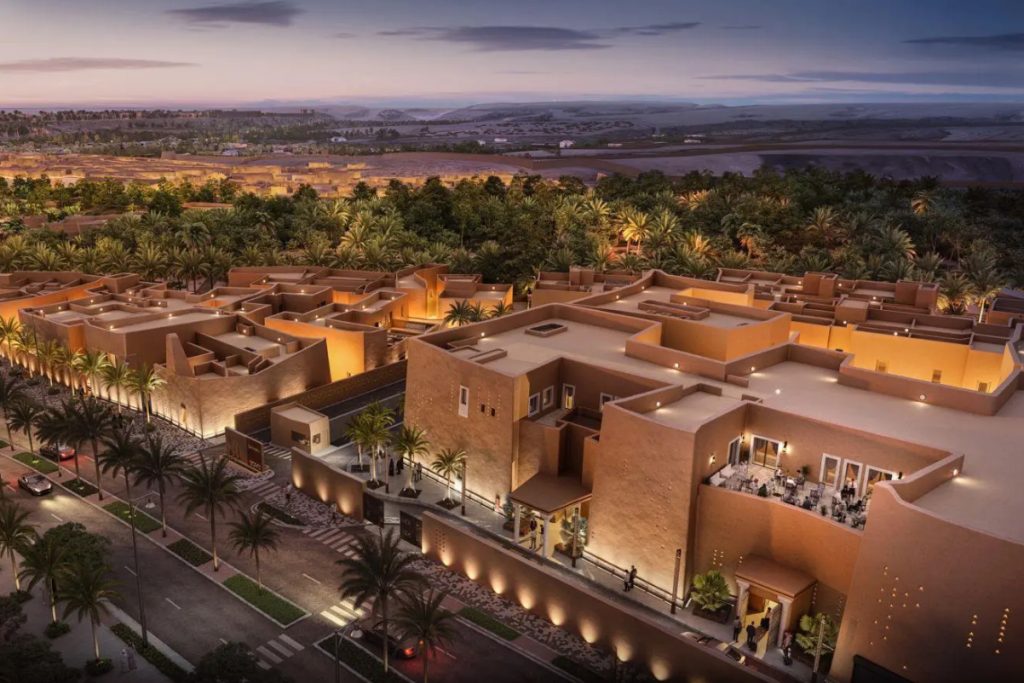Saudi Arabia has continued to see growth in inbound arrivals despite regional instability and war. The country’s tourism sector has grown significantly since launching its e-visa program, positioning Saudi Arabia as an emerging destination. The country has registered a 73% increase in the number of foreign tourists, with a focus on expanding source markets and attracting high-value tourists. The goal is to double tourism’s slice of the GDP pie by 2030, moving from 5% to 10%.
Vision 2030 is a plan that initially aimed to attract 100 million visitors annually by 2030, but has since been revised to 150 million visitors. Saudi Arabia announced that it has surpassed the goal of 100 million tourists in 2023, seven years ahead of schedule. The country is on track to receive between 30 and 32 million inbound tourists by the end of the year, with a significant portion coming from Asia. Saudi Arabia’s strategic focus on countries like India and China has been pivotal in driving this growth, supported by improved air connectivity with four Chinese airlines now connecting the two countries.
Saudi Arabia is placing emphasis on attracting high-value tourists, aiming to double the GDP contribution of travel and tourism from 5% to 10% by 2030. This strategy includes expanding luxury offerings along the Red Sea coast, with the development of high-end resorts and a focus on infrastructure, hospitality, and cultural experiences that appeal to affluent travelers. The country is offering diverse tourism experiences tailored to specific segments of travelers, from luxury resorts to mid-range accommodations, all aimed at balancing growth with quality and boosting the economy.
The country’s tourism strategy also focuses on regional partnerships, working with neighboring GCC countries to create multi-destination packages that attract tourists from key source markets like India and China. This multilateral approach to regional tourism is part of Saudi Arabia’s “Welcome to Arabia” branding, highlighting the shared cultural heritage of the region. The kingdom is in talks with countries like UAE, Qatar, Bahrain, Oman, and Jordan to ensure that a multi-destination package is appealing to tourists. The progress is being made towards implementing a GCC Unified Visa, which is currently under review by interior ministries of each member country.
Saudi Arabia has managed to grow its inbound arrivals despite regional tensions, with a focus on expanding source markets and attracting high-value tourists. The country has set ambitious goals with Vision 2030, which aims to attract 150 million visitors annually by 2030. The strategic focus on countries like India and China, as well as improved air connectivity, has been instrumental in driving this growth. Saudi Arabia is also working on developing luxury offerings along the Red Sea coast and investing in infrastructure, hospitality, and cultural experiences to appeal to affluent travelers.
The country’s tourism strategy includes a multilateral approach to regional tourism, emphasizing regional partnerships with neighboring GCC countries to create multi-destination packages. This approach is part of Saudi Arabia’s “Welcome to Arabia” branding, highlighting the shared cultural heritage of the region. The kingdom is working towards implementing a GCC Unified Visa to facilitate travel in the region. Overall, Saudi Arabia is focused on balancing growth with quality, expanding its tourism offerings, and boosting the economy through the tourism sector.


